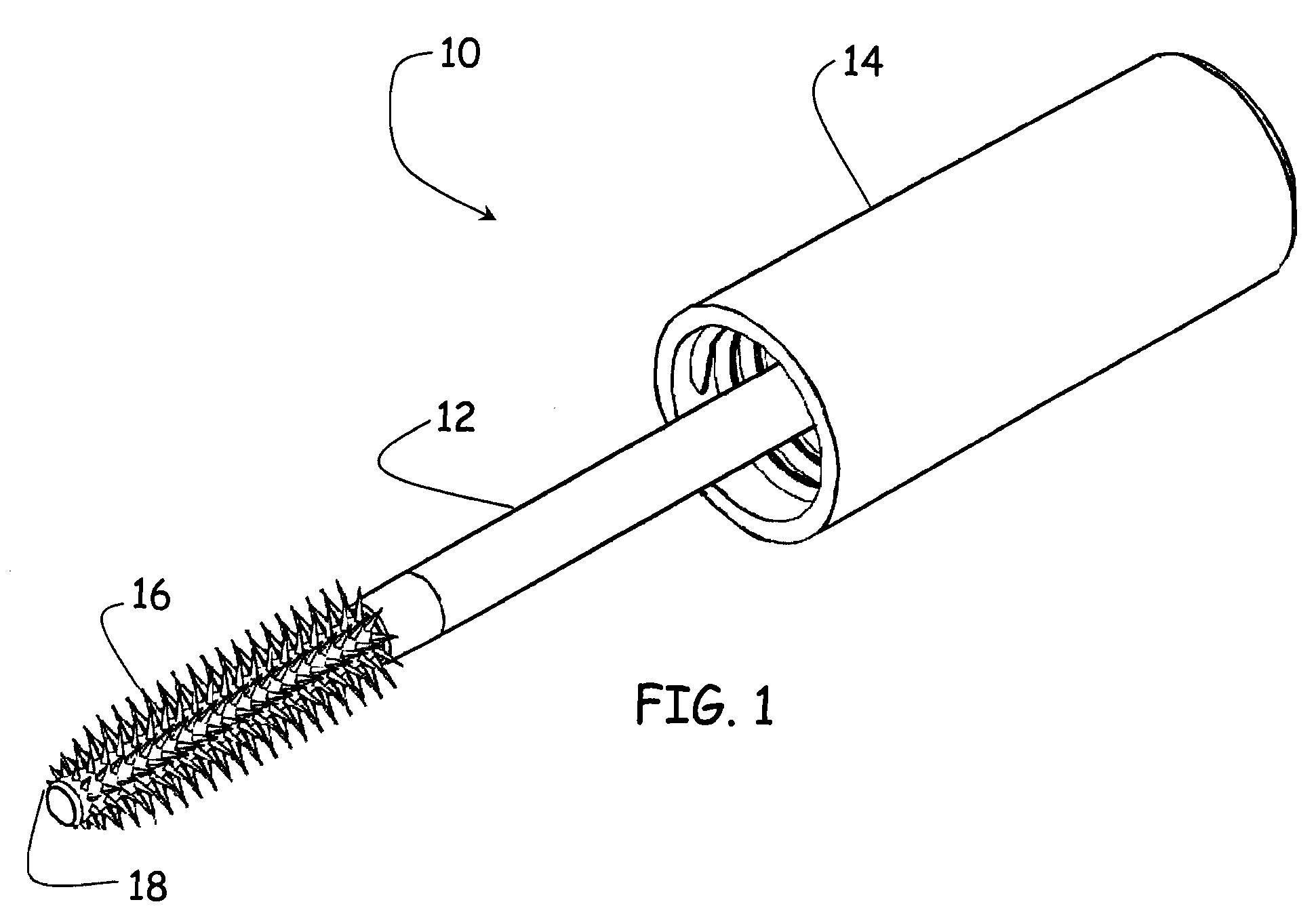Brush assembly with molded brush sleeve
a technology of molded brushes and sleeve, which is applied in the direction of packaging foodstuffs, packaging goods, manufacturing tools, etc., can solve the problems of reducing the crispness of the application process, reducing the adaptability of twisted wire constructions to different materials and application goals, and reducing the precision of the application process. , to achieve the effect of optimizing eyelash loading, combing characteristics, and application
- Summary
- Abstract
- Description
- Claims
- Application Information
AI Technical Summary
Benefits of technology
Problems solved by technology
Method used
Image
Examples
Embodiment Construction
[0043]As is the case with many inventions, the present invention for a brush assembly is subject to a wide variety of embodiments. However, to ensure that one skilled in the art will be able to understand and, in appropriate cases, practice the present invention, certain preferred embodiments of the broader invention revealed herein are described below and shown in the accompanying drawing figures. Before any particular embodiment of the invention is explained in detail, it must be made clear that the following details of construction and illustrations of inventive concepts are mere examples of the many possible manifestations of the invention. It will be further appreciated that, while the present discussion relates primarily to devices for enabling the retention and application of mascara and other makeup products, the assembly disclosed herein is not so limited and may be readily applied to other industries beyond the field of cosmetics.
[0044]Turning more particularly to the draw...
PUM
| Property | Measurement | Unit |
|---|---|---|
| dimension | aaaaa | aaaaa |
| length | aaaaa | aaaaa |
| inner diameter | aaaaa | aaaaa |
Abstract
Description
Claims
Application Information
 Login to View More
Login to View More - R&D
- Intellectual Property
- Life Sciences
- Materials
- Tech Scout
- Unparalleled Data Quality
- Higher Quality Content
- 60% Fewer Hallucinations
Browse by: Latest US Patents, China's latest patents, Technical Efficacy Thesaurus, Application Domain, Technology Topic, Popular Technical Reports.
© 2025 PatSnap. All rights reserved.Legal|Privacy policy|Modern Slavery Act Transparency Statement|Sitemap|About US| Contact US: help@patsnap.com



